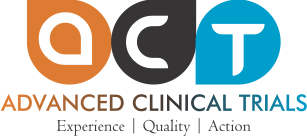Phase I trials are the first stage of testing in human subjects. Normally, a small group of 20–100 healthy volunteers will be recruited. This phase is designed to assess the safety (pharmacovigilance), tolerability, pharmacokinetics, and pharmacodynamics of a drug. These trials are often conducted in a clinical trial clinic, where the subject can be observed by full-time staff. These clinical trial clinics are often run by contract research organization (CROs) who conduct these studies on behalf of pharmaceutical companies or other research investigators. The subject who receives the drug is usually observed until several half-lives of the drug have passed. Phase I trials also normally include dose-ranging, also called dose escalation studies, so that the best and safest dose can be found and to discover the point at which a compound is too poisonous to administer. The tested range of doses will usually be a fraction[quantify] of the dose that caused harm in animal testing. Phase I trials most often include healthy volunteers. However, there are some circumstances when real patients are used, such as patients who have terminal cancer or HIV and the treatment is likely to make healthy individuals ill. These studies are usually conducted in tightly controlled clinics called CPUs (Central Pharmacological Units), where participants receive 24-hour medical attention and oversight. In addition to the previously mentioned unhealthy individuals, “patients who have typically already tried and failed to improve on the existing standard therapies”[1] may also participate in phase I trials. Volunteers are paid an inconvenience fee for their time spent in the volunteer centre. Pay depends on length of participation.
There are different kinds of phase I trial:
Single ascending dose
Single ascending dose studies are those in which small groups of subjects are given a single dose of the drug while they are observed and tested for a period of time. Typically, a small number of participants, usually three, are entered sequentially at a particular dose. If they do not exhibit any adverse side effects, and the pharmacokinetic data is roughly in line with predicted safe values, the dose is escalated, and a new group of subjects is then given a higher dose. If unacceptable toxicity is observed in any of the three participants, an additional number of participants, usually three, are treated at the same dose. This is continued until pre-calculated pharmacokinetic safety levels are reached, or intolerable side effects start showing up (at which point the drug is said to have reached the maximum tolerated dose (MTD)). If an additional unacceptable toxicity is observed, then the dose escalation is terminated and that dose, or perhaps the previous dose, is declared to be the maximally tolerated dose. This particular design assumes that the maximally tolerated dose occurs when approximately one-third of the participants experience unacceptable toxicity. Variations of this design exist, but most are similar.
Multiple ascending dose
Multiple ascending dose studies are conducted to better understand the pharmacokinetics and pharmacodynamics of multiple doses of the drug. In these studies, a group of patients receives multiple low doses of the drug, while samples (of blood, and other fluids) are collected at various time points and analyzed to acquire information on how the drug is processed within the body. The dose is subsequently escalated for further groups, up to a predetermined level.
Food effect
A short trial designed to investigate any differences in absorption of the drug by the body, caused by eating before the drug is given. These studies are usually run as a crossover study, with volunteers being given two identical doses of the drug while fasted, and after being fed.
Selecting the smartest route enables you to reach your goal with less hurdles.
Your clinical journey from a single molecule to a commercial drug is more than a single stage, it is an expedition. Evidence based clinical data to predict the drug safety, efficacy, regulatory-ethical acceptance, potential and the impact of the license. Strategic plannic with smart teams will ensure increase the chances of making your drug a commercial reality. We have advanced technologies, processes and people to walk you through every phase of development.
We have partnerships with established early phase hospitals in India, if your target market is Asia. We are establishing a network of early phase units across the subcontinent to ensure that your compound will enter the First in Human and Phase I safety trials without any hurdles. When we liaise with an early phase unit we ensure that the units are based in hospitals with access to emergency rooms, high quality documentation, 24X7 availability of doctors and other relevant staff.
Our service will also include:
• Complete Phase 1 package
• Protocol combinations
• Pharmacology consulting
• Additional safety studies
• Complete clinical data services

